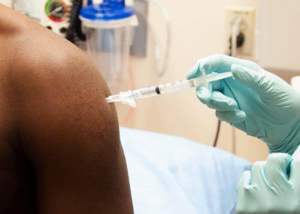Kat KelleyGHTC
Kat Kelly is a senior program assistant at GHTC who supports GHTC's communications and member engagement activities.

Gavi, the Vaccine Alliance, signed an advanced purchase commitment, pledging to spend US$5 million on an Ebola vaccine currently under development by pharmaceutical company Merck & Co. The vaccine candidate was tested on 4,000 people in Guinea last year, and the results were promising: despite all participants having close contact with at least one Ebola patient, none developed the disease more than ten days after vaccination (several days are required for a vaccine to confer protection). The vaccine candidate—VSV-EBOV—was developed and tested in partnership with the Canadian and US governments, however, without the urgency of an outbreak, public-sector support moving forward is limited. The agreement guarantees that there will be a market for the vaccine, assuring Merck & Co. that they can recover investments in advanced development and manufacturing. This move will also enable Gavi to establish a stockpile of the vaccine so that it can be rapidly deployed in future outbreaks.
New research suggests that 2.6 million stillbirths occur each year, 420,000 of which are attributable to malaria or syphilis infections. These results underscore the need for testing and treatment of malaria and syphilis in pregnant women, particularly in endemic regions. Fortunately, there are low-cost interventions that could drastically reduce adverse pregnancy outcomes attributable to malaria and syphilis infections. The malaria parasite is able to reside in the placenta, even when undetectable in the mother’s blood, and thus, preventative treatment for malaria is critical. The antimalarial sulphadoxine-pyrimethamine, which costs a mere $0.20 per patient, is recommended for use in pregnant women in endemic areas. In east and southern Africa, an estimated 5 percent of pregnant women are infected with syphilis and in Tanzania, up to half of stillbirths are caused by syphilis. However, one dose of penicillin can cure both maternal and congenital syphilis and prevent stillbirth—at just $1.40 per person.
While malaria- and syphilis-related stillbirths can be prevented with the scale-up of existing medicines, many more could be prevented with interventions that are not appropriate for low-resource settings, which is particularly concerning as 98 percent of stillbirths occur in low- and middle-income countries. Further, the cause of stillbirth is often unknown, according to the Global Alliance to Prevent Prematurity and Stillbirth, and additional research is needed to determine and address these causes.
There is little incentive for pharmaceutical companies to invest in antimicrobial research and development (R&D): antibiotics are prescribed for short periods of time and competition among antibiotics keeps prices low. However, with the spread of drug resistance, the “[financial] value assigned to antibiotics and diagnostics often does not reflect the benefits they bring to society,” according to a declaration authored by 80 pharmaceutical and diagnostic companies and released at this year‘s World Economic Forum in Davos, Switzerland. The declaration calls on governments to work with the pharmaceutical industry to spur antimicrobial R&D, identifying innovative financing mechanisms, including prizes (a Market Entry Rewards initiative) and intellectual property–related incentives. In response, the companies pledge to invest in R&D for new antibiotics, as well as improved diagnostics to prevent the unnecessary use of antibiotics (i.e., for viral conditions).